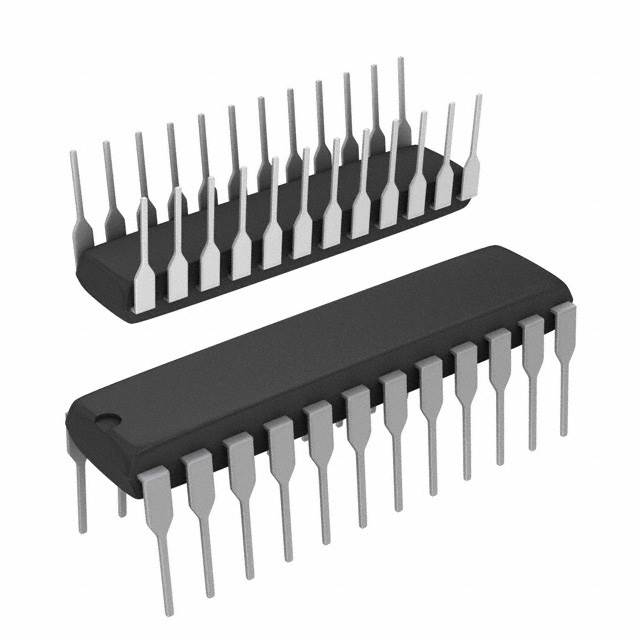Xem thông số kỹ thuật để biết chi tiết sản phẩm.

AD7579JN
Product Overview
Category
AD7579JN belongs to the category of analog-to-digital converters (ADCs).
Use
The AD7579JN is used to convert analog signals into digital data. It is commonly employed in various applications where precise and accurate conversion of analog signals is required.
Characteristics
- High resolution: The AD7579JN offers a high-resolution conversion, ensuring accurate representation of analog signals.
- Fast conversion speed: With its fast conversion speed, the AD7579JN can handle real-time data acquisition efficiently.
- Low power consumption: This ADC is designed to consume minimal power, making it suitable for battery-powered devices.
- Wide input voltage range: The AD7579JN supports a wide input voltage range, allowing it to accommodate different signal levels.
- Excellent linearity: It exhibits excellent linearity, ensuring faithful reproduction of the input signal.
Package
The AD7579JN comes in a 28-pin plastic dual in-line package (DIP), which provides ease of integration into various electronic systems.
Essence
The essence of the AD7579JN lies in its ability to accurately convert analog signals into digital data, enabling further processing and analysis.
Packaging/Quantity
The AD7579JN is typically packaged in tubes or trays, with a quantity of 25 units per tube/tray.
Specifications
- Resolution: 12 bits
- Sampling Rate: Up to 100 kSPS (thousand samples per second)
- Input Voltage Range: ±10V
- Power Supply: +5V
- Operating Temperature Range: -40°C to +85°C
Detailed Pin Configuration
- VDD: Power supply positive terminal
- VREF: Reference voltage input
- AGND: Analog ground
- VIN: Analog input voltage
- D0-D11: Digital output bits
- CS: Chip select input
- RD: Read control input
- WR: Write control input
- A0-A2: Address inputs
- DGND: Digital ground
(Note: The remaining pins are not listed for brevity.)
Functional Features
- High-resolution conversion for accurate signal representation.
- Fast conversion speed enables real-time data acquisition.
- Low power consumption for energy-efficient operation.
- Wide input voltage range accommodates various signal levels.
- Excellent linearity ensures faithful reproduction of the input signal.
Advantages and Disadvantages
Advantages
- High resolution and accuracy.
- Fast conversion speed.
- Low power consumption.
- Wide input voltage range.
- Excellent linearity.
Disadvantages
- Limited sampling rate compared to some other ADCs.
- Requires an external reference voltage.
Working Principles
The AD7579JN operates on the principle of successive approximation. It samples the analog input voltage, compares it with a reference voltage, and generates a digital output representing the input signal's magnitude.
Detailed Application Field Plans
The AD7579JN finds applications in various fields, including: 1. Industrial automation: Used for precise measurement and control systems. 2. Medical equipment: Enables accurate data acquisition in medical devices. 3. Test and measurement instruments: Provides high-resolution signal analysis capabilities. 4. Audio processing: Converts analog audio signals into digital format for further processing. 5. Communication systems: Facilitates analog-to-digital conversion in communication equipment.
Detailed and Complete Alternative Models
- AD7689: 16-bit, 250 kSPS SAR ADC.
- ADS1115: 16-bit, 860 SPS I2C ADC.
- MCP3208: 12-bit, 100 kSPS SPI ADC.
- LTC2400: 24-bit, 5 SPS delta-sigma ADC.
- MAX11100: 16-bit, 250 kSPS SAR ADC.
(Note: The list above provides a few alternative models; there are many more available in the market.)
In conclusion, the AD7579JN is a high-resolution analog-to-digital converter with fast conversion speed and low power consumption. It finds applications in various fields, including industrial automation, medical equipment, and audio processing. While it has some limitations, such as a limited sampling rate, it offers excellent accuracy and linearity. Alternative models with different specifications are also available for specific application requirements.
Liệt kê 10 câu hỏi và câu trả lời thường gặp liên quan đến ứng dụng AD7579JN trong giải pháp kỹ thuật
Sure! Here are 10 common questions and answers related to the application of AD7579JN in technical solutions:
Q: What is AD7579JN? A: AD7579JN is a 12-bit successive approximation analog-to-digital converter (ADC) manufactured by Analog Devices.
Q: What is the operating voltage range of AD7579JN? A: The operating voltage range of AD7579JN is typically between +5V and +15V.
Q: What is the maximum sampling rate of AD7579JN? A: AD7579JN has a maximum sampling rate of 100 kilosamples per second (ksps).
Q: How many analog input channels does AD7579JN have? A: AD7579JN has 8 analog input channels, allowing you to measure up to 8 different signals simultaneously.
Q: What is the resolution of AD7579JN? A: AD7579JN has a resolution of 12 bits, meaning it can represent analog signals with 4096 discrete levels.
Q: Does AD7579JN require an external reference voltage? A: Yes, AD7579JN requires an external reference voltage for accurate conversion. It supports both unipolar and bipolar references.
Q: Can AD7579JN operate in a single-ended or differential mode? A: AD7579JN can operate in both single-ended and differential modes, providing flexibility in signal measurement.
Q: What is the power consumption of AD7579JN? A: The power consumption of AD7579JN varies depending on the operating conditions but typically ranges from 5mW to 20mW.
Q: Does AD7579JN have built-in digital interfaces? A: No, AD7579JN does not have built-in digital interfaces. It requires external microcontrollers or digital logic to communicate with it.
Q: What are some typical applications of AD7579JN? A: AD7579JN is commonly used in various applications such as data acquisition systems, industrial automation, medical instruments, and process control.
Please note that the answers provided here are general and may vary depending on specific implementation requirements.

